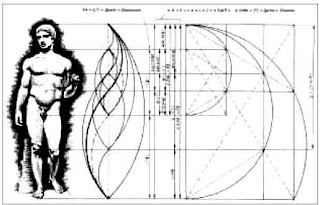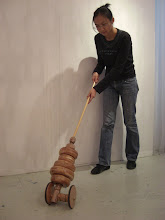First statue to show how a person naturally stands. The sculptor depicted the shifting of weight from one leg to the other (contrapposto). The head turns slightly and the Archaic smile is gone.

From the end of the Archaic Period:

____________________
By Polykleitos, “Doryporos” (Spear Bearer) Roman marbel copy from Pompeii Italy.


Like harmonic chords in music: intervals: 2:1, 3:2, 4:3
Look for the ideal: “standard of perfection” Canon
Cross balance, weight shifting
Asymmetrical balance:
Right arm, left leg: relaxed
Supporting leg and left arm: tensed
Head: turn to the right, hips twist to the left
Ratio of head/body: 1/7
_________________________
Aesthetic Philosophy:
'Beauty, Chrysippos believes, inheres... in the commensurability of the parts, such as that of finger to finger, and all these to the palm and wrist, and of these to the forearm, and of the forearm to the upper arm, and of everything to everything else, just as it is written in the "Canon" of Polykleitos. For having taught us in that treatise all the commensurate proportions of the body, Polykleitos made a work to support his account; he made a statue according to the tenets of his writing, and called it, like the treatise, the "Canon". '
written byGalen, a physician who lived during the second century CE
_______________________

Golden Section: AB/AG=AG/GB. If AB=1 and AG=x then GB=1-x and 1/x=x/(1/x) and it follows x2 =1-x, ie. x2+x-1=0
By Pythagoreans. Pythagoras might have visited Egypt which might found this ratio there earlier already.




沒有留言:
張貼留言